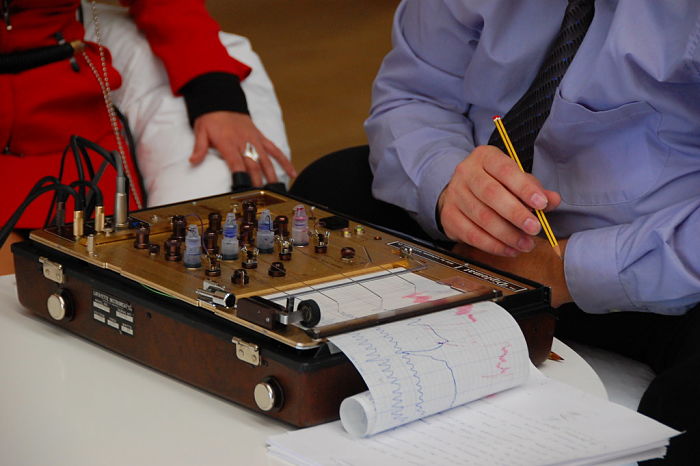The Polygraph as Propaganda

Usman Khan had been let out of prison having served a sentence for plotting to blow up the London Stock Exchange. On his release he had declared he was not a terrorist. But in November last year he attacked and killed two people in a rampage at a prisoner rehabilitation conference, before being shot by the police. In the ensuing blame game, it became something of an embarrassment for the authorities that they were unable to detect that Khan was still dangerous. The new Conservative government, determined to demonstrate its solid credentials in combating terrorism, has recently announced that convicted terrorists freed from prison will have to undergo ‘lie detector’ tests.
The ignorance of the government, about what these procedures are, was demonstrated in a radio interview when a senior judge advocating these ‘tests’ claimed they were “neurological aspects of psychiatry that enabled the thoughts of the suspects to be accessed.” Such blatant overselling of course does the government no harm. It bolsters the popular view that there are indeed devices that can detect lies, and that the government is using the latest science to tackle an endemic problem.
Sadly, these proposals are rather far from the truth of the matter. In a thorough, recently updated review of tests of the polygraph, under the title The Lie Behind the Lie Detector, George Maschke and Gino Scalabrini (5th edition freely available at https://antipolygraph.org/pubs.shtml) show how much good systematic evidence there is that the procedure is fraught with problems. Not only are there no standard, widely agreed ways of using the polygraph, but the careful study of its application produce widely varying results, many hardly different from chance levels. There are some studies that indicate the assumption of innocence is above chance levels, but guilt cannot be determined with these devices.
After all, the variety of physiological arousal responses, recorded at the same time, from which the polygraph gets its name, are generalized reactions associated with excitement, stress or anxiety. They are not uniquely related to lying. Nor does every lie, or every person not telling the truth, inevitably have associated with it the same physiological response. Person convinced they are telling the truth, even though they are not, will not necessarily reveal sweaty palms or increased blood pressure. Khan may have thought he was no longer planning a terrorist attack when he left prison, but something may have happened later that led to him wanting to kill people at a prisoner rehabilitation conference. Why this was regarded as a continuation of the same motivations as initiated his desire to blow up the stock exchange has not been commented on.
Most jurisdictions do not allow polygraph evidence in court. Some U.S. states do allow it provided the defendant agrees. This can be seen as a way for an innocent person to establish they are not guilty by being willing to undertake the ‘test.’ In the U.K. it has been used to check if sex offenders have broken the conditions of their parole. Often in these cases the offenders believe so thoroughly in the mystique of the procedure that they confess even before they are wired up.
This is then little better than the ancient tradition of getting a suspect to have a mouthful of dry rice and then answer questions. Their anxiety at being guilty was assumed to make their mouth dry-up. This had the consequence of causing the rice to interfere with their speech. As with all devices that ‘work’ because people believe in them, the polygraph requires a mythology to support its use. Such a mythology can be harnessed by law enforcement agencies and governments. They can use the polygraph as propaganda.































































































Antipolygraph.org his hardly an unbiased source. There are few people that believe the polygraph detects lies. However, it is a useful investigative tool. It’s reliability depends on the qualifications and experience of the examiner, who should be a qualified forensic psychologist. A result that shows deception leads to further scrutiny and investigation. It is working well in the monitoring of sex offenders. It’s interesting that few courts allow polygraph results as evidence when eye witness testimony is infinitely less reliable. If one terrorist is kept off the streets because of a polygraph test result, that leads to further investigation, it… Read more »